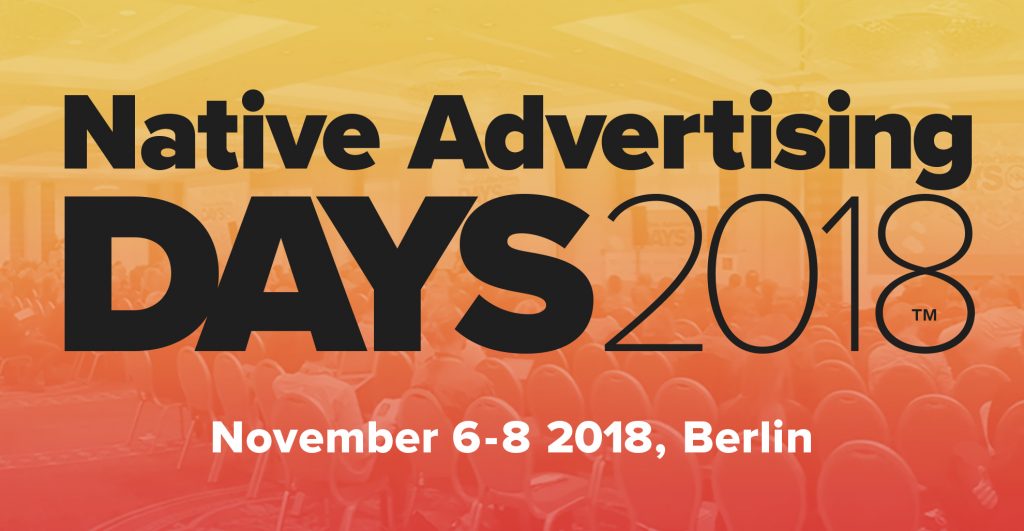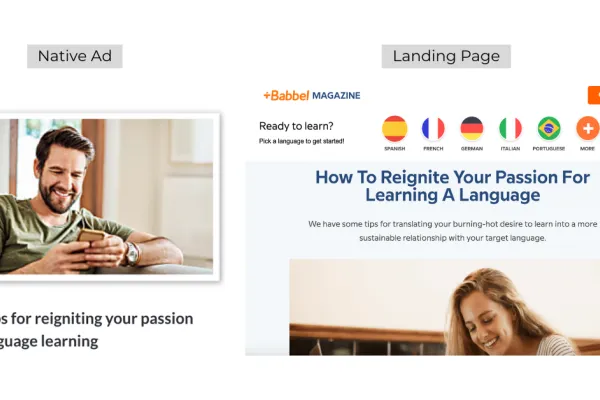
 Details
Details
While marketers and advertisers are leaning more and more heavily on video content in the recent years, tracking the success of these videos is still an art that needs to be refined.
In fact, according to a recent study by Vidyard, only 35% of businesses are using intermediate or advanced analytics to measure their performance. That is a huge divide between people who use videos, and who is actually tracking how these videos help their advertising objectives.
If you’re still seeing your view count as the ultimate measure of your native video ad’s success, you’ll need to start digging deeper to truly understand how your video impacts your viewers. Here’s how.
In the end, views are vanity metrics. These platforms find ways to make views easy so they can show those results to ad buyers. Don’t fall for that
Views are last
First thing’s last: let’s get our minds off of views. When marketers think of video metrics, the first number that comes to mind is view count. Sure, it is thrilling to watch the video views tick higher and higher, but advertisers need to take a step back and think critically about this metric. What do they even mean?
Going back to Marketing 101: all videos have to have a goal, and every goal has a key performance indicator tailor-made to reflect if the goal has been achieved, or if it has not.
Working backward - the only thing that a view tells the brand who made it is that people watched its video. Unless you’re a media network, your primary objective for your video should never be just to get views. There should always be another layer - get people to watch the video and then take an action.
RELATED: 5 Branded Video Content Myths Put to Bed
Video views don’t even truly reflect brand lift. Maybe someone watched the video, but the message was lost and they don’t connect your company to what they viewed. Maybe they watch the video and don’t even remember your brand at all.
In addition, views mean something different for each platform. On Facebook, for example, a view is counted by anyone who merely watches the first three seconds of a video. On a platform with autoplay, this metric can mean almost nothing. Youtube has a longer view count by counting anyone who watches the first 30 seconds as a view. Both platforms count repeat viewers as separate views.
In the end, views are vanity metrics. These platforms find ways to make views easy so they can show those results to ad buyers. Don’t fall for that.
The most impactful way to measure is to survey those you have targeted with your video ad.
Measuring Brand Lift because of Your Video
Brand lift is considered by marketers as one of the most important metrics to measure - but it’s also a tricky metric to prove. It’s hard to tell brand lift just by looking at your analytic platform, especially when video is your intermediate medium to your goal.
Instead, you have to understand what your potential audience is talking about before and after you launch your video. A passive way to do this is to use a social listening platform. There are many free and premium versions on the market that allow you to monitor if profiles on social media are talking about your keywords. Here is a good guide with several social listening platform suggestions. If your brand is being included in these social conversations after your video is launched, and these conversations are on your brand’s topic, then that could be considered a brand lift.
RELATED: It's Crucial to Choose the Right KPIs
However, the most impactful way to measure, though it takes the most resources, is to survey those you have targeted with your video ad.
Now, how your brand has “lifted” is quantified by the questions you are asking.
Are you looking to raise awareness about your brand through your video? Ask your respondents if your ad was memorable. Are you looking to dive deeper to see if your video made people interested in your brand? Ask them what the main message of your video was. Or, maybe you’re trying to see if people see your brand as desirable. Then, you’ll want to question their impression of your brand.
Both Youtube and Facebook have built in survey platforms for their advertisers. On Facebook, for example, they will slide your survey question in the Newsfeed for your target audience and control audience to engage with. However, there are market requirements for your brand to have the ability to participate in these surveys. If you cannot utilize these features, you can put your survey on your website, or through your email campaign.
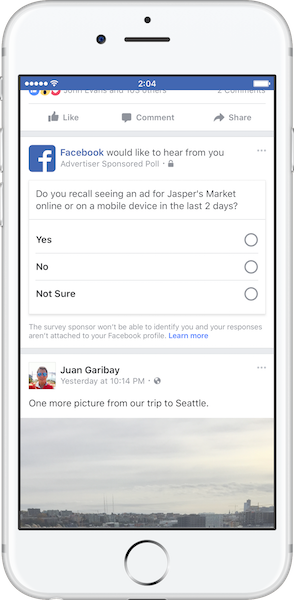
Referrals to Site From Your Video
Certainly, there are many ways that someone could take action after watching your video, but the most common CTA is to get people to visit your site, whether it is to check out a product or learn more information.
RELATED: The Perfect Marriage Between Video and Data
It will be key to include a UTM URL in your campaign to a landing page specifically designed for your video project. This will allow you to easily track the audience that was captured by your video through your preferred analytics platform. That way, you can see how your video affected your user’s behavior by observing what pages they viewed after they watched your video, how long these visitors stayed on your site, and more.
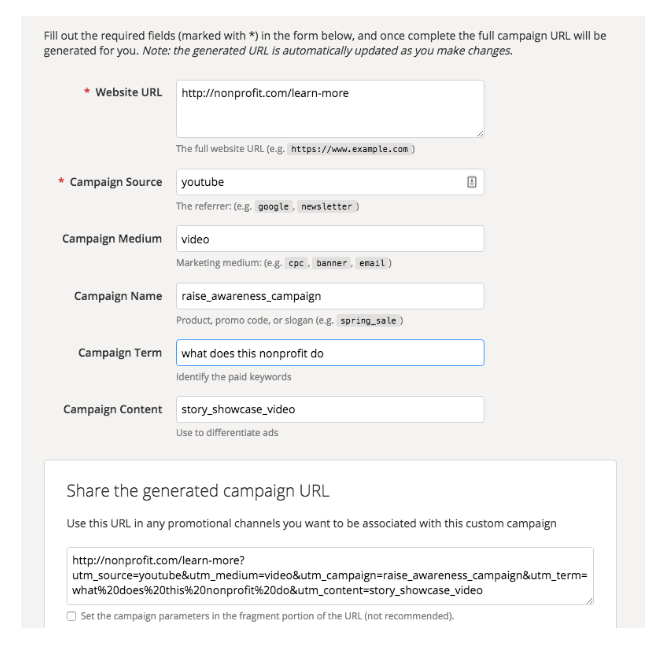
In addition, if your video has a showcase page on your website, you can use Google Search Console, Moz and other platforms to see if people are creating links to that page on your website. On search console, for example, you can see the exact page that linked to your video, and the anchor text that leads to your link. This is another way to see if people are talking about your video and how they are talking about your video. If sharing a link to your video “breaks” your UTM URL tracking, you’ll be able to define your video audience more accurately by observing that through your backlinks.
Video Engagement
It is likely that your video is not hosted by your site, but is instead is posted through a video hosting site like Youtube or Vimeo, or a social network like Facebook.
In that case, each video hosting platform has it’s own analytics feature to consider, with metrics tailor-made to focus on honing in on video success. The most important of these analytic features can be broken down to Watch Time Reports and Engagement Reports.

Watch time reports delve into how your audience watches your video. Let’s break down a few key metrics that can be found for both Youtube and Facebook Videos:
- Average View Duration: How long, on average, does your audience stick around? Are they staying long enough to get a sense of your main message?
- Audience Retention Report: What parts of your video does your audience watch, rewatch, or skip over? Is there a part of your video that is confusing people and is rewatched several times? Is there a part of your video that is so compelling it is rewatched? Or, is there a part of your video that is boring enough to be skipped over?
- Completion Reports: How many people watch your video from start to finish? How many people watch a certain percent of the video?
- Embed Reports and Traffic Sources (Youtube Only): Where are people finding your video? Where else are people are sharing your video? If people are embedding your video on certain pages, that can tell you a lot about your audience’s reaction to your video.
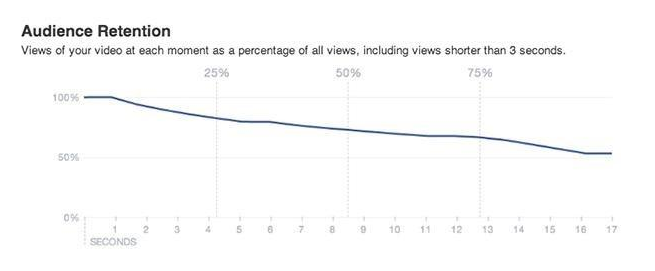
Here is the latest statistics from Vidyard that give a good sense of benchmarks to shoot for:
“The average portion of viewers remaining by the end of a video is 37%, with video length playing a big role in retention. Videos less than 90 seconds see an average retention rate of 53% compared to videos over 30 minutes that retain only 10% of viewers”
Engagement Reports vary a bit from platform to platform, but the idea behind them is similar. These metrics reveal how people respond to your video. Who is liking, commenting, and sharing your video? Is there a spike of followers on your channel or page after the video?
Before you begin to roll out your native video ad, you need to critically consider how you will measure its success.
Summary
Before you begin to roll out your native video ad, you need to critically consider how you will measure its success. By approaching your goals with clarity, instead of getting wrapped up in vanity metrics and “going viral,” you can garner key insights on how your audience responds to your video, and take that knowledge to improve your next initiative.
Key Takeaways:
- Don’t rely on video views to tell you if you reached your goal. Views are a fuzzy metric that don’t give much insight into how your video performed.
- Measure brand lift in conjunction with your video. That will give you an accurate report on if your video made an impression on your audience’s buying decisions
- Referrals from your video to your site can give you a great insight about your audience
- Engagement is a key metric to measure
Need more native advertising inspiration, learnings and knowledge? Join us in Berlin for the conference Native Advertising DAYS in November -- Read more

